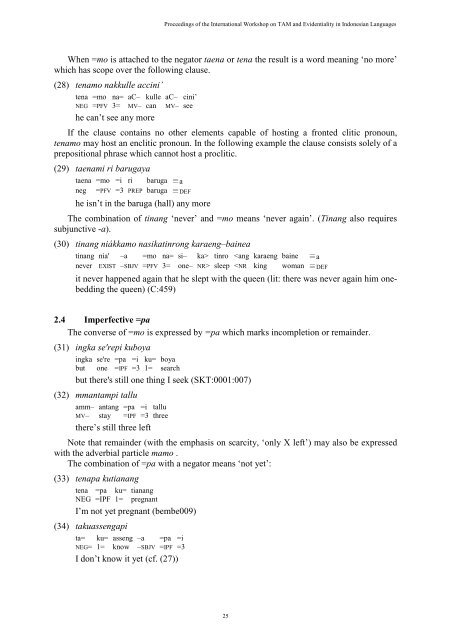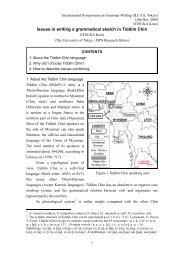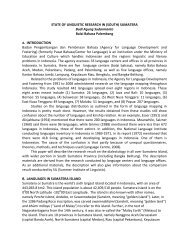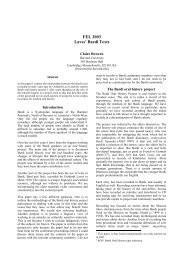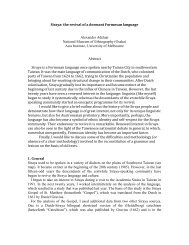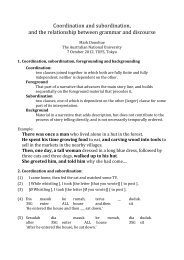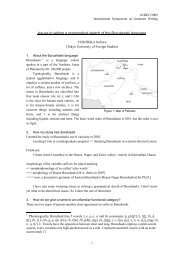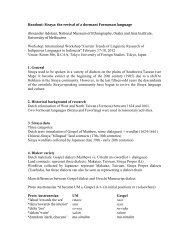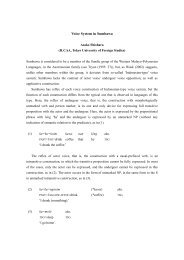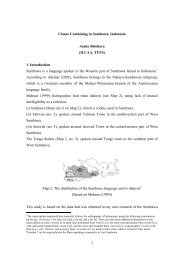Aspectual and modal clitics in Makassarese and Makassar Indonesian
Aspectual and modal clitics in Makassarese and Makassar Indonesian
Aspectual and modal clitics in Makassarese and Makassar Indonesian
You also want an ePaper? Increase the reach of your titles
YUMPU automatically turns print PDFs into web optimized ePapers that Google loves.
When =mo is attached to the negator taena or tena the result is a word mean<strong>in</strong>g ‘no more’<br />
which has scope over the follow<strong>in</strong>g clause.<br />
(28) tenamo nakkulle acc<strong>in</strong>i’<br />
tena =mo na= aC– kulle aC– c<strong>in</strong>i’<br />
NEG =PFV 3= MV– can MV– see<br />
he can’t see any more<br />
If the clause conta<strong>in</strong>s no other elements capable of host<strong>in</strong>g a fronted clitic pronoun,<br />
tenamo may host an enclitic pronoun. In the follow<strong>in</strong>g example the clause consists solely of a<br />
prepositional phrase which cannot host a proclitic.<br />
(29) taenami ri barugaya<br />
taena =mo =i ri baruga ≡a<br />
neg =PFV =3 PREP baruga ≡DEF<br />
Proceed<strong>in</strong>gs of the International Workshop on TAM <strong>and</strong> Evidentiality <strong>in</strong> <strong>Indonesian</strong> Languages<br />
he isn’t <strong>in</strong> the baruga (hall) any more<br />
The comb<strong>in</strong>ation of t<strong>in</strong>ang ‘never’ <strong>and</strong> =mo means ‘never aga<strong>in</strong>’. (T<strong>in</strong>ang also requires<br />
subjunctive -a).<br />
(30) t<strong>in</strong>ang niákkamo nasikat<strong>in</strong>rong karaeng–ba<strong>in</strong>ea<br />
t<strong>in</strong>ang nia' –a =mo na= si– ka> t<strong>in</strong>ro sleep


